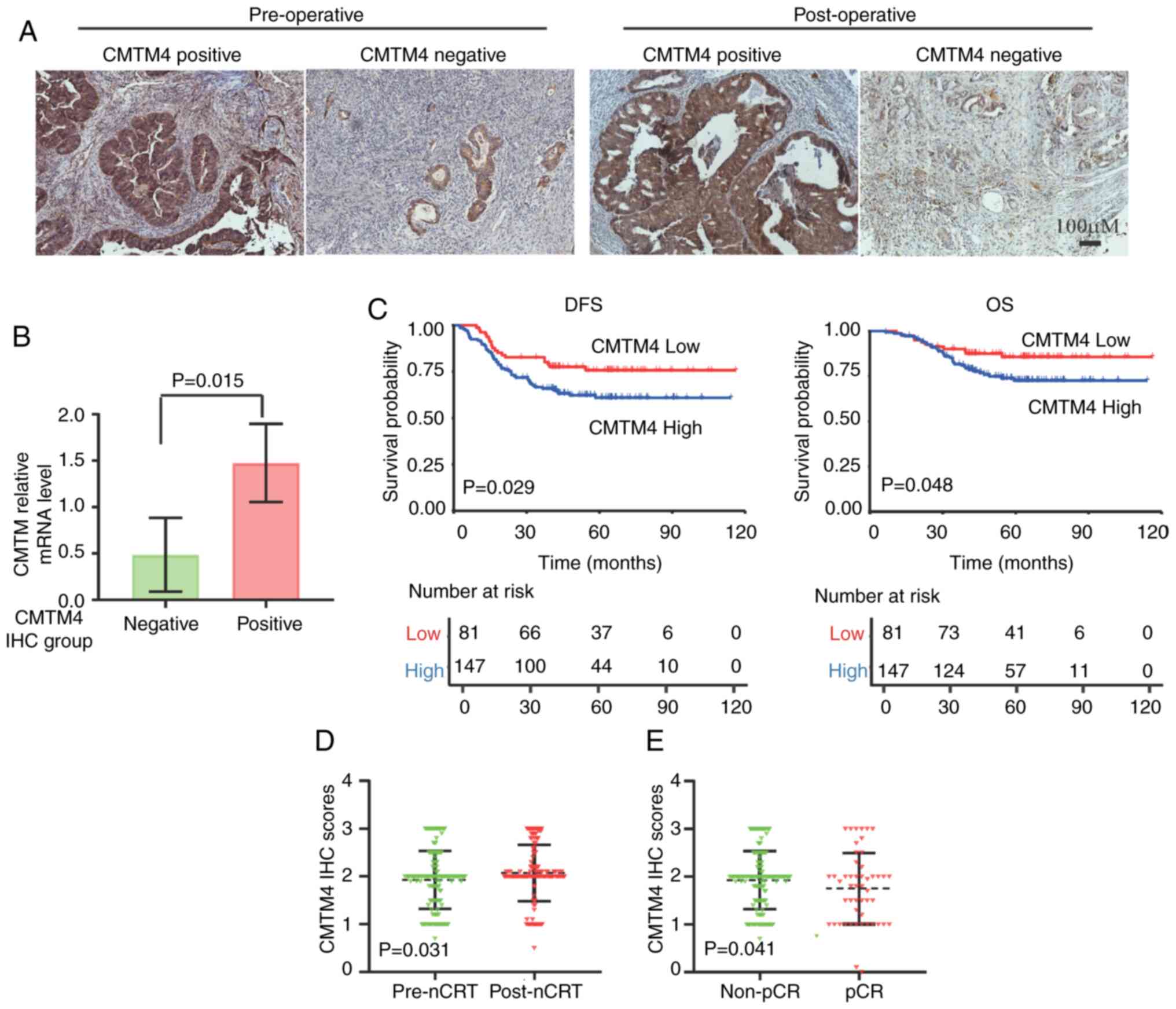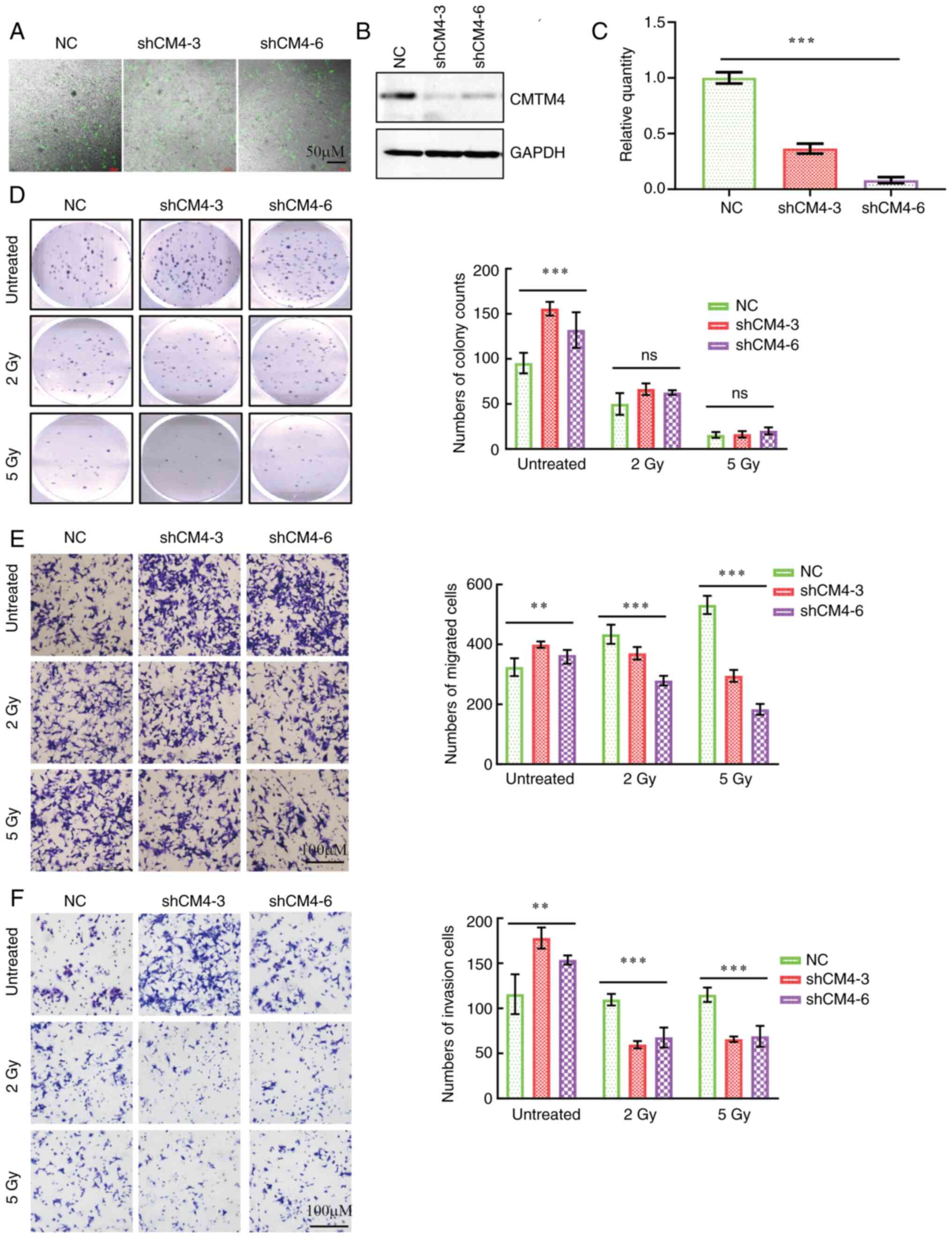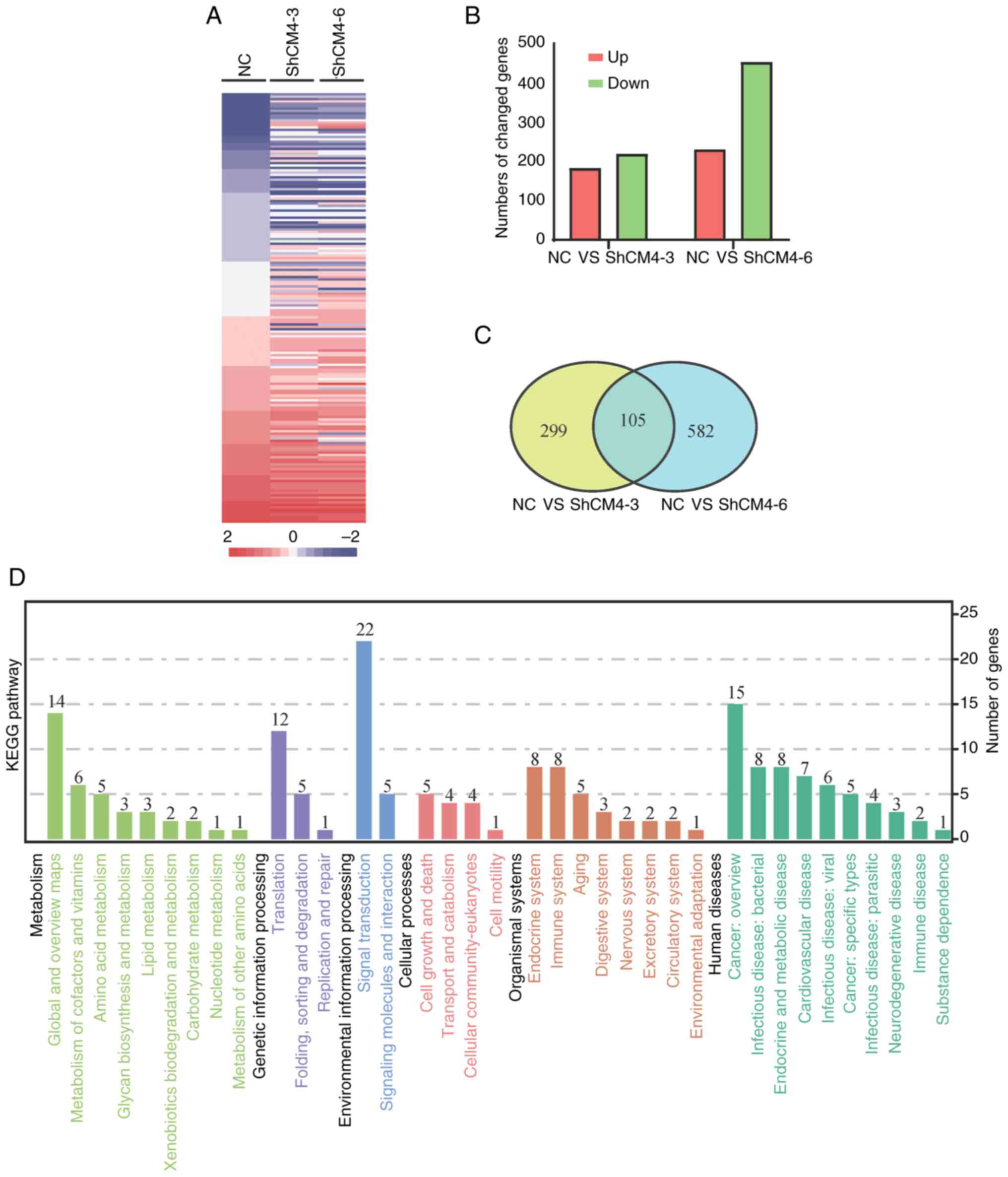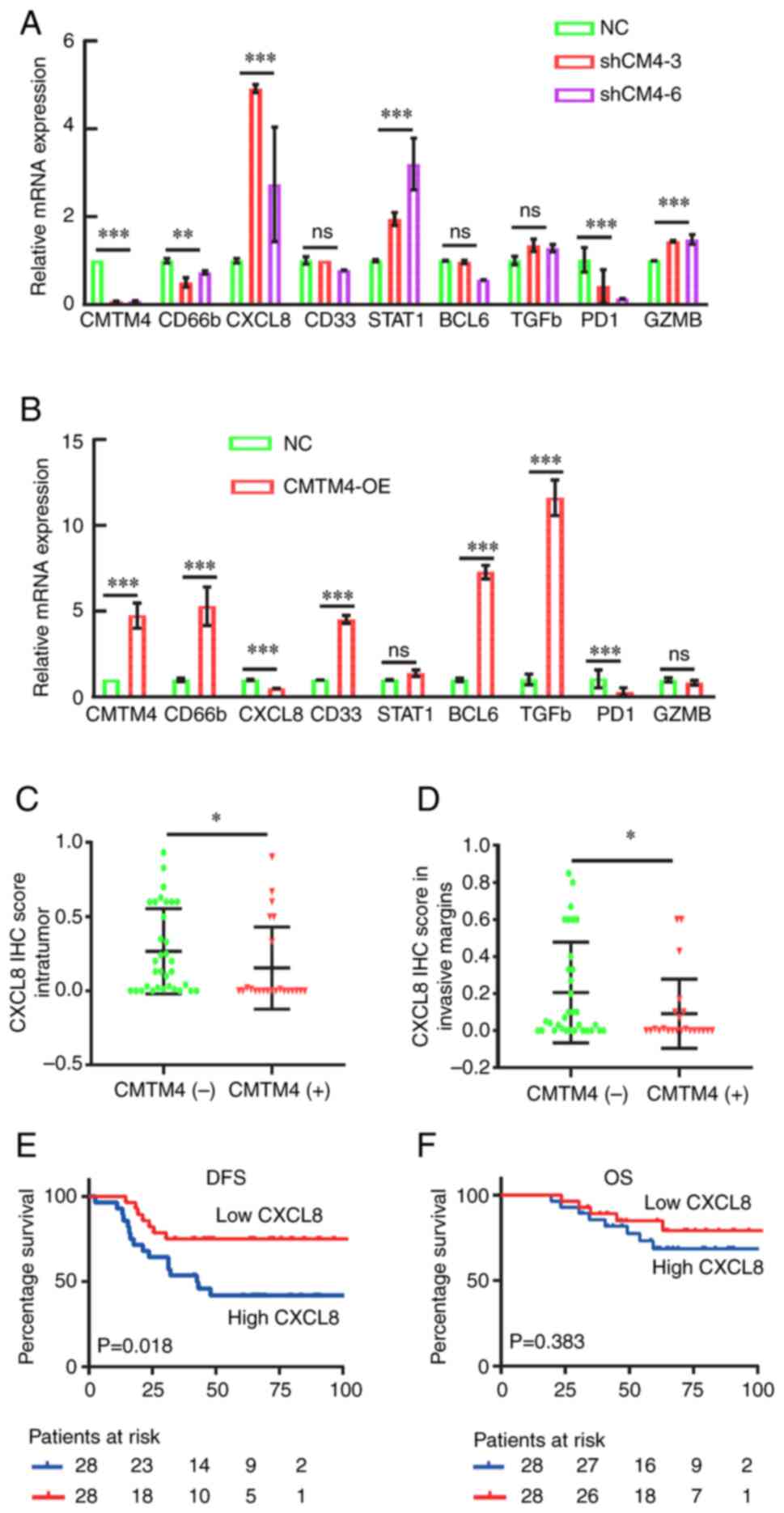|
1
|
Sung H, Ferlay J, Siegel RL, Laversanne M,
Soerjomataram I, Jemal A and Bray F: Global cancer statistics 2020:
GLOBOCAN estimates of incidence and mortality worldwide for 36
cancers in 185 countries. CA Cancer J Clin. 71:209–249. 2021.
View Article : Google Scholar : PubMed/NCBI
|
|
2
|
Xia C, Dong X, Li H, Cao M, Sun D, He S,
Yang F, Yan X, Zhang S, Li N and Chen W: Cancer statistics in China
and United States, 2022: Profiles, trends, and determinants. Chin
Med J (Engl). 135:584–590. 2022. View Article : Google Scholar : PubMed/NCBI
|
|
3
|
Dekker E, Tanis PJ, Vleugels JLA, Kasi PM
and Wallace MB: Colorectal cancer. Lancet. 394:1467–1480. 2019.
View Article : Google Scholar : PubMed/NCBI
|
|
4
|
Wang Y, Shen L, Wan J, Zhang H, Wu R, Wang
J, Wang Y, Xu Y, Cai S, Zhang Z and Xia F: Neoadjuvant
chemoradiotherapy combined with immunotherapy for locally advanced
rectal cancer: A new era for anal preservation. Front Immunol.
13:10670362022. View Article : Google Scholar : PubMed/NCBI
|
|
5
|
Mei WJ, Wang XZ, Li YF, Sun YM, Yang CK,
Lin JZ, Wu ZG, Zhang R, Wang W, Li Y, et al: Neoadjuvant
chemotherapy with CAPOX versus chemoradiation for locally advanced
rectal cancer with uninvolved mesorectal fascia (CONVERT): Initial
results of a phase III trial. Ann Surg. 277:557–564. 2023.
View Article : Google Scholar : PubMed/NCBI
|
|
6
|
Peeters KCMJ, Marijnen CAM, Nagtegaal ID,
Kranenbarg EK, Putter H, Wiggers T, Rutten H, Pahlman L, Glimelius
B, Leer JW, et al: The TME trial after a median follow-up of 6
years: Increased local control but no survival benefit in
irradiated patients with resectable rectal carcinoma. Ann Surg.
246:693–701. 2007. View Article : Google Scholar : PubMed/NCBI
|
|
7
|
Kapiteijn E, Marijnen CA, Nagtegaal ID,
Putter H, Steup WH, Wiggers T, Rutten HJ, Pahlman L, Glimelius B,
van Krieken JH, et al: Preoperative radiotherapy combined with
total mesorectal excision for resectable rectal cancer. N Engl J
Med. 345:638–646. 2001. View Article : Google Scholar : PubMed/NCBI
|
|
8
|
Wu J, Li L, Wu S and Xu B: CMTM family
proteins 1–8: Roles in cancer biological processes and potential
clinical value. Cancer Biol Med. 17:528–542. 2020. View Article : Google Scholar : PubMed/NCBI
|
|
9
|
Xue H, Li T, Wang P, Mo X, Zhang H, Ding
S, Ma D, Lv W, Zhang J and Han W: CMTM4 inhibits cell proliferation
and migration via AKT, ERK1/2, and STAT3 pathway in colorectal
cancer. Acta Biochim Biophys Sin (Shanghai). 51:915–924. 2019.
View Article : Google Scholar : PubMed/NCBI
|
|
10
|
Li T, Cheng Y, Wang P, Wang W, Hu F, Mo X,
Lv H, Xu T and Han W: CMTM4 is frequently downregulated and
functions as a tumour suppressor in clear cell renal cell
carcinoma. J Exp Clin Cancer Res. 34:1222015. View Article : Google Scholar : PubMed/NCBI
|
|
11
|
Li H, Liu YT, Chen L, Zhou JJ, Chen DR, Li
SJ and Sun ZJ: CMTM4 regulates epithelial-mesenchymal transition
and PD-L1 expression in head and neck squamous cell carcinoma. Mol
Carcinog. 60:556–566. 2021. View Article : Google Scholar : PubMed/NCBI
|
|
12
|
Chui NN, Cheu JW, Yuen VW, Chiu DK, Goh
CC, Lee D, Zhang MS, Ng IO and Wong CC: Inhibition of CMTM4
sensitizes cholangiocarcinoma and hepatocellular carcinoma to T
cell-mediated antitumor immunity through PD-L1. Hepatol Commun.
6:178–193. 2022. View Article : Google Scholar : PubMed/NCBI
|
|
13
|
Zhou HQ, Li JH, Liu LW, Lou JM and Ren ZG:
Increased CMTM4 mRNA expression predicts a poor prognosis in
patients with hepatocellular carcinoma. Hepatobiliary Pancreat Dis
Int. 19:596–601. 2020. View Article : Google Scholar : PubMed/NCBI
|
|
14
|
Tan S, Guo X, Bei C, Zhang H, Li D, Zhu X
and Tan H: Prognostic significance and immune characteristics of
CMTM4 in hepatocellular carcinoma. BMC Cancer. 22:9052022.
View Article : Google Scholar : PubMed/NCBI
|
|
15
|
Bei C, Zhang Y, Wei R, Zhu X, Wang Z, Zeng
W, Chen Q and Tan S: Clinical significance of CMTM4 expression in
hepatocellular carcinoma. Onco Targets Ther. 10:5439–5443. 2017.
View Article : Google Scholar : PubMed/NCBI
|
|
16
|
Mezzadra R, Sun C, Jae LT, Gomez-Eerland
R, de Vries E, Wu W, Logtenberg MEW, Slagter M, Rozeman EA, Hofland
I, et al: Identification of CMTM6 and CMTM4 as PD-L1 protein
regulators. Nature. 549:106–110. 2017. View Article : Google Scholar : PubMed/NCBI
|
|
17
|
Burr ML, Sparbier CE, Chan YC, Williamson
JC, Woods K, Beavis PA, Lam EYN, Henderson MA, Bell CC, Stolzenburg
S, et al: CMTM6 maintains the expression of PD-L1 and regulates
anti-tumour immunity. Nature. 549:101–105. 2017. View Article : Google Scholar : PubMed/NCBI
|
|
18
|
Zhang T, Yu H, Dai X and Zhang X: CMTM6
and CMTM4 as two novel regulators of PD-L1 modulate the tumor
microenvironment. Front Immunol. 13:9714282022. View Article : Google Scholar : PubMed/NCBI
|
|
19
|
Wang L, Li ZY, Li ZW, Li YH, Sun YS, Ji
JF, Gu J and Cai Y: Efficacy and safety of neoadjuvant
intensity-modulated radiotherapy with concurrent capecitabine for
locally advanced rectal cancer. Dis Colon Rectum. 58:186–192. 2015.
View Article : Google Scholar : PubMed/NCBI
|
|
20
|
Cuccurullo V and Mansi L: AJCC cancer
staging handbook: From the AJCC Cancer Staging Manual (7th
edition). Eur J Nucl Med Mol Imaging. 38:4082011. View Article : Google Scholar
|
|
21
|
Wen Z, Luo D, Wang S, Rong R, Evers BM,
Jia L, Fang Y, Daoud EV, Yang S, Gu Z, et al: Deep learning-based
h-score quantification of immunohistochemistry-stained images. Mod
Pathol. 37:1003982024. View Article : Google Scholar : PubMed/NCBI
|
|
22
|
Matos LL, Trufelli DC, de Matos MG and da
Silva Pinhal MA: Immunohistochemistry as an important tool in
biomarkers detection and clinical practice. Biomark Insights.
5:9–20. 2010. View Article : Google Scholar : PubMed/NCBI
|
|
23
|
Li T, Fan J, Wang B, Traugh N, Chen Q, Liu
JS, Li B and Liu XS: TIMER: A web server for comprehensive analysis
of tumor-infiltrating immune cells. Cancer Res. 77:e108–e110. 2017.
View Article : Google Scholar : PubMed/NCBI
|
|
24
|
Danaher P, Warren S, Dennis L, D'Amico L,
White A, Disis ML, Geller MA, Odunsi K, Beechem J and Fling SP:
Gene expression markers of tumor infiltrating leukocytes. J
Immunother Cancer. 5:182017. View Article : Google Scholar : PubMed/NCBI
|
|
25
|
Ginestet C: ggplot2: Elegant graphics for
data analysis. Journal of the Royal Statistical Society Series A:
Stat Soc. 174:245–246. 2011. View Article : Google Scholar : PubMed/NCBI
|
|
26
|
Subramanian A, Tamayo P, Mootha VK,
Mukherjee S, Ebert BL, Gillette MA, Paulovich A, Pomeroy SL, Golub
TR, Lander ES and Mesirov JP: Gene set enrichment analysis: A
knowledge-based approach for interpreting genome-wide expression
profiles. Proc Natl Acad Sci USA. 102:15545–15550. 2005. View Article : Google Scholar : PubMed/NCBI
|
|
27
|
Huang DW, Sherman BT and Lempicki RA:
Bioinformatics enrichment tools: Paths toward the comprehensive
functional analysis of large gene lists. Nucleic Acids Res.
37:1–13. 2009. View Article : Google Scholar : PubMed/NCBI
|
|
28
|
Huang DW, Sherman BT and Lempicki RA:
Systematic and integrative analysis of large gene lists using DAVID
bioinformatics resources. Nat Protoc. 4:44–57. 2009. View Article : Google Scholar : PubMed/NCBI
|
|
29
|
Livak KJ and Schmittgen TD: Analysis of
relative gene expression data using real-time quantitative PCR and
the 2(−Delta Delta C(T)) method. Methods. 25:402–408. 2001.
View Article : Google Scholar : PubMed/NCBI
|
|
30
|
Martin ST, Heneghan HM and Winter DC:
Systematic review and meta-analysis of outcomes following
pathological complete response to neoadjuvant chemoradiotherapy for
rectal cancer. Br J Surg. 99:918–928. 2012. View Article : Google Scholar : PubMed/NCBI
|
|
31
|
Wen J, Fang S, Hu Y, Xi M, Weng Z, Pan C,
Luo K, Ling Y, Lai R, Xie X, et al: Impacts of neoadjuvant
chemoradiotherapy on the immune landscape of esophageal squamous
cell carcinoma. EBioMedicine. 86:1043712022. View Article : Google Scholar : PubMed/NCBI
|
|
32
|
Shi M, Chen Y and Ji D: The implications
from the interplay of neoadjuvant chemoradiotherapy and the immune
microenvironment in rectal cancer. Future Oncol. 18:3229–3244.
2022. View Article : Google Scholar : PubMed/NCBI
|
|
33
|
Miao B, Hu Z, Mezzadra R, Hoeijmakers L,
Fauster A, Du S, Yang Z, Sator-Schmitt M, Engel H, Li X, et al:
CMTM6 shapes antitumor T cell response through modulating protein
expression of CD58 and PD-L1. Cancer Cell. 41:1817–1828.e1819.
2023. View Article : Google Scholar : PubMed/NCBI
|
|
34
|
Wang Z, Peng Z, Liu Q, Guo Z, Menatola M,
Su J, Li T, Ge Q, Wang P, Shen L and Jin R: Co-expression with
membrane CMTM6/4 on tumor epithelium enhances the prediction value
of PD-L1 on Anti-PD-1/L1 therapeutic efficacy in gastric
adenocarcinoma. Cancers (Basel). 13:51752021. View Article : Google Scholar : PubMed/NCBI
|
|
35
|
Zhu X, Zhang S, Tan S, Li D, Chen X, Kong
J, Fu Y, Wang C and Wen L: Expression of CMTM4 shows clinical
significance in lung cancer. Transl Cancer Res. 9:6214–6220. 2020.
View Article : Google Scholar : PubMed/NCBI
|
|
36
|
Liu S, Jiang T, Xiao L, Yang S, Liu Q, Gao
Y, Chen G and Xiao W: Total neoadjuvant therapy (TNT) versus
standard neoadjuvant chemoradiotherapy for locally advanced rectal
cancer: A systematic review and meta-analysis. Oncologist.
26:e1555–e1566. 2021. View Article : Google Scholar : PubMed/NCBI
|
|
37
|
Bhangu A, Fitzgerald JE, Slesser A,
Northover JM, Faiz O and Tekkis P: Prognostic significance of
extramural vascular invasion in T4 rectal cancer. Colorectal Dis.
15:e665–e671. 2013. View Article : Google Scholar : PubMed/NCBI
|
|
38
|
Chablani P, Nguyen P, Pan X, Robinson A,
Walston S, Wu C, Frankel WL, Chen W, Bekaii-Saab T, Chakravarti A,
et al: Perineural invasion predicts for distant metastasis in
locally advanced rectal cancer treated with neoadjuvant
chemoradiation and surgery. Am J Clin Oncol. 40:561–568. 2017.
View Article : Google Scholar : PubMed/NCBI
|
|
39
|
Wu AW, Cai Y, Li YH, Wang L, Li ZW, Sun YS
and Ji JF: Pattern and management of recurrence of mid-low rectal
cancer after neoadjuvant intensity-modulated radiotherapy:
Single-center results of 687 cases. Clin Colorectal Cancer.
17:e307–e313. 2018. View Article : Google Scholar : PubMed/NCBI
|
|
40
|
Liu S, Yang S, Yu H, Luo H, Chen G, Gao Y,
Sun R and Xiao W: A nomogram for predicting 10-year cancer specific
survival in patients with pathological T3N0M0 rectal cancer. Front
Med (Lausanne). 9:9776522022. View Article : Google Scholar : PubMed/NCBI
|
|
41
|
Shin JK, Huh JW, Lee WY, Yun SH, Kim HC,
Cho YB and Park YA: Clinical prediction model of pathological
response following neoadjuvant chemoradiotherapy for rectal cancer.
Sci Rep. 12:71452022. View Article : Google Scholar : PubMed/NCBI
|
|
42
|
Sinha UK, Kast WM and Lin DC: Single-cell
genomics identifies immune response to neoadjuvant
chemoradiotherapy. EBioMed. 86:1043892022. View Article : Google Scholar : PubMed/NCBI
|
|
43
|
Holmes WE, Lee J, Kuang WJ, Rice GC and
Wood WI: Structure and functional expression of a human
interleukin-8 receptor. Science. 253:1278–1280. 1991. View Article : Google Scholar : PubMed/NCBI
|
|
44
|
Waugh DJ and Wilson C: The interleukin-8
pathway in cancer. Clin Cancer Res. 14:6735–6741. 2008. View Article : Google Scholar : PubMed/NCBI
|
|
45
|
Alfaro C, Sanmamed MF, Rodríguez-Ruiz ME,
Teijeira Á, Oñate C, González Á, Ponz M, Schalper KA, Pérez-Gracia
JL and Melero I: Interleukin-8 in cancer pathogenesis, treatment
and follow-up. Cancer Treat Rev. 60:24–31. 2017. View Article : Google Scholar : PubMed/NCBI
|
|
46
|
Meng ZW, Zhang L, Cai XR, Wang X, She FF
and Chen YL: IL-8 is a novel prometastatic chemokine in
intrahepatic cholangiocarcinoma that induces CXCR2-PI3K/AKT
signaling upon CD97 activation. Sci Rep. 13:187112023. View Article : Google Scholar : PubMed/NCBI
|
|
47
|
Chen F, Aye L, Yu L, Liu L, Liu Y, Lin Y,
Gao D, Gao Q and Zhang S: SSH1 promotes progression of intrahepatic
cholangiocarcinoma via p38 MAPK-CXCL8 axis. Carcinogenesis.
44:232–241. 2023. View Article : Google Scholar : PubMed/NCBI
|
|
48
|
Zhang SQ, Wang LL, Li YT, Wang G, Li L,
Sun SZ, Yao LJ and Shen L: MicroRNA-126 attenuates the effect of
chemokine CXCL8 on proliferation, migration, apoptosis, and
MAPK-dependent signaling activity of vascular endothelial cells
cultured in a medium with high glucose concentration. Bull Exp Biol
Med. 171:202–207. 2021. View Article : Google Scholar : PubMed/NCBI
|
|
49
|
Petreaca ML, Yao M, Liu Y, Defea K and
Martins-Green M: Transactivation of vascular endothelial growth
factor receptor-2 by interleukin-8 (IL-8/CXCL8) is required for
IL-8/CXCL8-induced endothelial permeability. Mol Biol Cell.
18:5014–5023. 2007. View Article : Google Scholar : PubMed/NCBI
|
|
50
|
Ahmed S, Mohamed HT, El-Husseiny N, El
Mahdy MM, Safwat G, Diab AA, El-Sherif AA, El-Shinawi M and Mohamed
MM: IL-8 secreted by tumor associated macrophages contribute to
lapatinib resistance in HER2-positive locally advanced breast
cancer via activation of Src/STAT3/ERK1/2-mediated EGFR signaling.
Biochim Biophys Acta Mol Cell Res. 1868:1189952021. View Article : Google Scholar : PubMed/NCBI
|
|
51
|
Fu XT, Dai Z, Song K, Zhang ZJ, Zhou ZJ,
Zhou SL, Zhao YM, Xiao YS, Sun QM, Ding ZB and Fan J:
Macrophage-secreted IL-8 induces epithelial-mesenchymal transition
in hepatocellular carcinoma cells by activating the
JAK2/STAT3/Snail pathway. Int J Oncol. 46:587–596. 2015. View Article : Google Scholar : PubMed/NCBI
|
|
52
|
Hu X, Yuan L and Ma T: Mechanisms of
JAK-STAT signaling pathway mediated by CXCL8 gene silencing on
epithelial-mesenchymal transition of human cutaneous melanoma
cells. Oncol Lett. 20:1973–1981. 2020. View Article : Google Scholar : PubMed/NCBI
|
|
53
|
Pennel KA, Quinn JA, Nixon C, Inthagard J,
van Wyk HC, Chang D, Rebus S; GPOL Group, ; Hay J, Maka NN, et al:
CXCL8 expression is associated with advanced stage, right sided
ness, and distinct histological features of colorectal cancer. J
Pathol Clin Res. 8:509–520. 2022. View Article : Google Scholar : PubMed/NCBI
|
|
54
|
Shen Y, Zhang B, Wei X, Guan X and Zhang
W: CXCL8 is a prognostic biomarker and correlated with TNBC brain
metastasis and immune infiltration. Int Immunopharmacol.
103:1084542022. View Article : Google Scholar : PubMed/NCBI
|
|
55
|
Fang QI, Wang X, Luo G, Yu M, Zhang X and
Xu N: Increased CXCL8 expression is negatively correlated with the
overall survival of patients with er-negative breast cancer.
Anticancer Res. 37:4845–4852. 2017.PubMed/NCBI
|
|
56
|
Gu L, Yao Y and Chen Z: An
inter-correlation among chemokine (C-X-C motif) ligand (CXCL) 1,
CXCL2 and CXCL8, and their diversified potential as biomarkers for
tumor features and survival profiles in non-small cell lung cancer
patients. Transl Cancer Res. 10:748–758. 2021. View Article : Google Scholar : PubMed/NCBI
|
|
57
|
David JM, Dominguez C, Hamilton DH and
Palena C: The IL-8/IL-8R axis: A double agent in tumor immune
resistance. Vaccines (Basel). 4:222016. View Article : Google Scholar : PubMed/NCBI
|
|
58
|
Zhang M, Huang L, Ding G, Huang H, Cao G,
Sun X, Lou N, Wei Q, Shen T, Xu X, et al: Interferon gamma inhibits
CXCL8-CXCR2 axis mediated tumor-associated macrophages tumor
trafficking and enhances anti-PD1 efficacy in pancreatic cancer. J
Immunother Cancer. 8:e0003082020. View Article : Google Scholar : PubMed/NCBI
|
|
59
|
Yi M, Peng C, Xia B and Gan L: CXCL8
facilitates the survival and paclitaxel-resistance of
triple-negative breast cancers. Clin Breast Cancer. 22:e191–e198.
2022. View Article : Google Scholar : PubMed/NCBI
|
|
60
|
Wang RX, Ji P, Gong Y, Shao ZM and Chen S:
Value of CXCL8-CXCR1/2 axis in neoadjuvant chemotherapy for
triple-negative breast cancer patients: A retrospective pilot
study. Breast Cancer Res Treat. 181:561–570. 2020. View Article : Google Scholar : PubMed/NCBI
|
|
61
|
Wilson C, Purcell C, Seaton A, Oladipo O,
Maxwell PJ, O'Sullivan JM, Wilson RH, Johnston PG and Waugh DJ:
Chemotherapy-induced CXC-chemokine/CXC-chemokine receptor signaling
in metastatic prostate cancer cells confers resistance to
oxaliplatin through potentiation of nuclear factor-kappaB
transcription and evasion of apoptosis. J Pharmacol Exp Ther.
327:746–759. 2008. View Article : Google Scholar : PubMed/NCBI
|
|
62
|
Lin C, He H, Liu H, Li R, Chen Y, Qi Y,
Jiang Q, Chen L, Zhang P, Zhang H, et al: Tumour-associated
macrophages-derived CXCL8 determines immune evasion through
autonomous PD-L1 expression in gastric cancer. Gut. 68:1764–1773.
2019. View Article : Google Scholar : PubMed/NCBI
|
|
63
|
Principe S, Zapater-Latorre E, Arribas L,
Garcia-Miragall E and Bagan J: Salivary IL-8 as a putative
predictive biomarker of radiotherapy response in head and neck
cancer patients. Clin Oral Investig. 26:437–448. 2022. View Article : Google Scholar : PubMed/NCBI
|
|
64
|
León X, García J, Farré N, Majercakova K,
Avilés-Jurado FX, Quer M and Camacho M: Predictive capacity of IL-8
expression in head and neck squamous carcinoma patients treated
with radiotherapy or chemoradiotherapy. Acta Otorrinolaringol Esp
(Engl Ed). 72:337–343. 2021. View Article : Google Scholar : PubMed/NCBI
|














